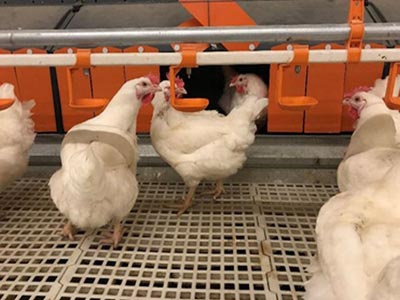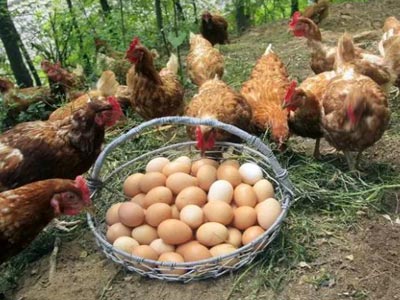There are various ways of raising laying hens, among which the main ways of raising include free-range, battery cage, and slat floor raising, etc. Since different feeding methods have different management modes, the quality and nutritional value of eggs produced by laying hens are relatively different.
Factors affect the increase of egg quality and quantity
- Shortage of water and feed, sudden change of feed, temperature too high or too low, house leaking and raining, typhoon and other sudden changes and sudden events;
- power outages, insufficient light or no lights at night, such as sudden changes in lighting;
- sudden abnormal noise, strangers or other animals entering the house, changes in feeding management procedures, use of vaccines or drugs, etc.
1.Free-range raising
Advantages
Free-range chickens are generally raised in wide places such as mountains, forests, orchards, pastures, etc. These places not only provide a wide space for free-range chickens, but also have rich food such as grass and insects which are original ecological non-polluting feeds. Exercise and healthy food make free-range chickens’ meat delicious and let their egg has brightly colored egg yolks.
Disadvantages
Among the three feeding methods of free-range, cage and slat floor-raising, the egg yield of free-range chickens is low. The reason for this result is that the free-range chickens have a large amount of exercise, so the free-range chickens are more likely to consume physical strength, resulting in a decrease in the body mass of the free-range chickens over time, which will directly affects the weight of the eggs it lays, as well as the density and efficiency of egg production.



2.Battery cage raising
Battery cage raising is to raise laying hens in wire-welded cages. Compared with free-range chickens, the cage-raising method increases the stocking density of chickens to a certain extent and can raise a larger number of laying hens at the same time to obtain higher egg production. In addition, due to the insignificant changes in body weight of caged chickens, that is, chickens in battery cages have a stable feeding time and less exercise. The stable body mass will make the weight of eggs produced by chickens heavier than that of free-range chickens, and the sufficient physical energy of caged chickens also provides conditions for high egg production rates. At the same time, there are few stress factors faced by the caged method. As long as the management personnel reasonably control the temperature, light and frequent ventilation in the cage, the egg production of caged chickens will not change drastically. However, the proportion of blood-spotted eggs in caged chickens is high, the egg quality is slightly poor, and the qualified rate of breeding eggs is low, and caged chickens are more prone to sudden death syndrome, which affects the survival rate and egg-laying performance of chickens. Therefore, although the egg production of chicken in battery cages is high For free-range chickens but less than for floor-raised chickens.
3.Floor raising
Floor raising mainly refers to the method of raising chickens off the ground and moving on meshes made of metal or other materials, and for more convenient management and cleaning of chicken manure. , When laying plastic mesh, metal mesh or plastic-coated mesh and other types of slatted floors on the net (grid), the general height should be kept at about 1.2 m above the ground. The advantage of floor raising is that the chickens live on the slats, the feces fall under the net, and the chickens do not directly contact the feces, which is conducive to the control of disease. The egg-laying performance of chickens is also relatively good. However, as far as floor raising is concerned, the daily feed consumption of each chicken is 10-15g more than that of caged chickens. From this, it seems that caged laying hens have an important reality for saving feed costs, reducing consumption and increasing income.



